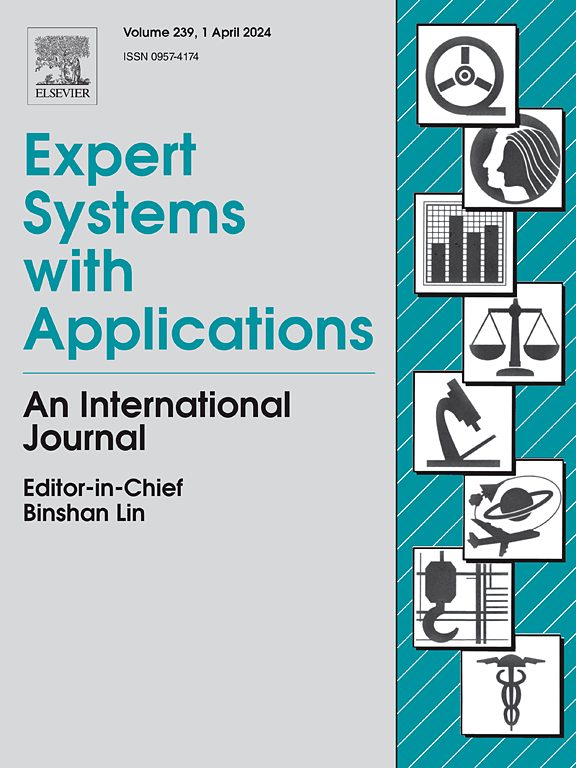基于DB-FA-YoLov6的复杂跨域场景智能无线传感算法
IF 7.5
1区 计算机科学
Q1 COMPUTER SCIENCE, ARTIFICIAL INTELLIGENCE
引用次数: 0
摘要
无线传感技术可以通过WiFi信号的特征信息来识别人体的运动。智能手机、可穿戴设备和其他智能设备的普及增加了无线传感在智能家居、智能医疗保健、人机交互和自动驾驶汽车等领域的使用。然而,移动通信环境的复杂性和动态性给无线传感带来了挑战。存在模型感知精度低、场景泛化能力差、环境依赖性强等问题。因此,本文提出了一种基于双支路频率注意机制的Yolov6网络的跨域智能无线传感算法DB-FA-YoLov6。该模型集成了Yolov6神经网络、频率关注模块和残差模块,提供了有效的信号特征提取和增强模型泛化。目标是减少环境对传感任务的影响,提高鲁棒性、可移植性和跨域精度。DB-FA-YOLOv6模型集成了BasicBlock和Bottleneck两种剩余模块。它用轻量级结构代替了Yolov6网络模型中的大型模块,减少了参数的数量,提高了模型训练和测试的效率,降低了复杂度。与当前多视觉任务视觉变压器网络(ViT-MVT)、环境无关(EI)和联合对抗域自适应(JADA)等感知算法相比,本文提出的DB-FA-YOLOv6算法具有更好的感知精度、感知效率和跨域性能。在域内场景下,该算法的感知精度提高10.0%,感知效率提高10.1%。该算法在位置和方向跨域场景下的感知精度分别提高10.5%和9.7%,感知效率分别提高7.0%和52.1%。本文章由计算机程序翻译,如有差异,请以英文原文为准。
An intelligent wireless sensing algorithm for complex cross-domain scenarios based on DB-FA-YoLov6
Wireless sensing technology can identify human motion via feature information from WiFi signals. The popularity of smartphones, wearable devices, and other smart devices has increased the use of wireless sensing in fields such as smart homes, smart healthcare, human–computer interaction, and autonomous vehicles. However, the mobile communication environment is complex and dynamic which makes wireless sensing challenging. The issues include low model sensing accuracy, poor scene generalization ability, and high environmental dependence. Therefore, this paper proposes a cross-domain intelligent wireless sensing algorithm based on a double branch frequency attention mechanism Yolov6 network called DB-FA-YoLov6. This integrates a Yolov6 neural network, frequency attention module, and residual module to provide efficient extraction of signal features and enhance model generalization. The goal is to reduce the effect of the environment on sensing tasks and improve robustness, portability, and cross-domain accuracy. The DB-FA-YOLOv6 model integrates two types of residual modules, BasicBlock and Bottleneck. It replaces the large modules in the Yolov6 network model with lightweight structures, which can decrease the number of parameters, improve the efficiency of model training and testing, and reduce the complexity. Compared with current sensing algorithms such as Vision Transformer Network for Multiple Vision Tasks (ViT-MVT), Environment Independent (EI), and Joint Adversarial Domain Adaptation (JADA), the proposed DB-FA-YOLOv6 algorithm has better sensing accuracy, sensing efficiency, and cross-domain performance. For the in-domain scenario, the proposed algorithm achieves improvements of 10.0 % in sensing accuracy and 10.1 % in sensing efficiency. The sensing accuracy of the proposed algorithm in cross-domain scenarios, namely location and orientation, is improved by 10.5 % and 9.7 %, and the sensing efficiency is improved by 7.0 % and 52.1 %, respectively.
求助全文
通过发布文献求助,成功后即可免费获取论文全文。
去求助
来源期刊

Expert Systems with Applications
工程技术-工程:电子与电气
CiteScore
13.80
自引率
10.60%
发文量
2045
审稿时长
8.7 months
期刊介绍:
Expert Systems With Applications is an international journal dedicated to the exchange of information on expert and intelligent systems used globally in industry, government, and universities. The journal emphasizes original papers covering the design, development, testing, implementation, and management of these systems, offering practical guidelines. It spans various sectors such as finance, engineering, marketing, law, project management, information management, medicine, and more. The journal also welcomes papers on multi-agent systems, knowledge management, neural networks, knowledge discovery, data mining, and other related areas, excluding applications to military/defense systems.
 求助内容:
求助内容: 应助结果提醒方式:
应助结果提醒方式:


